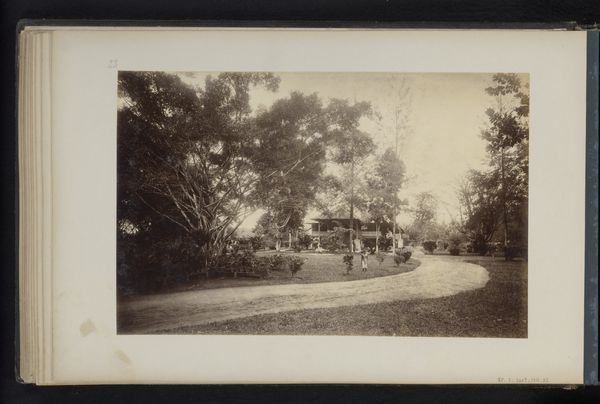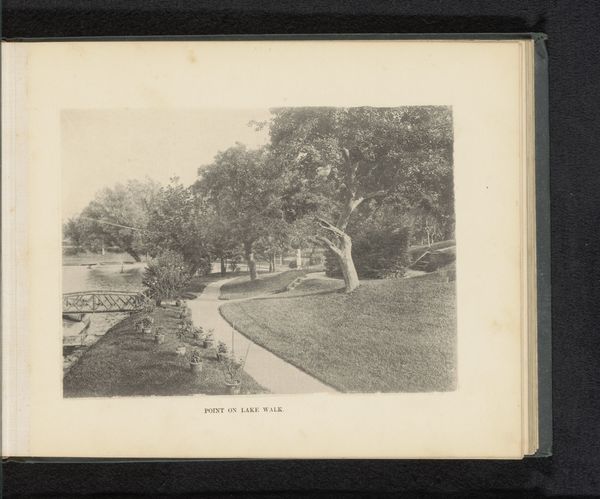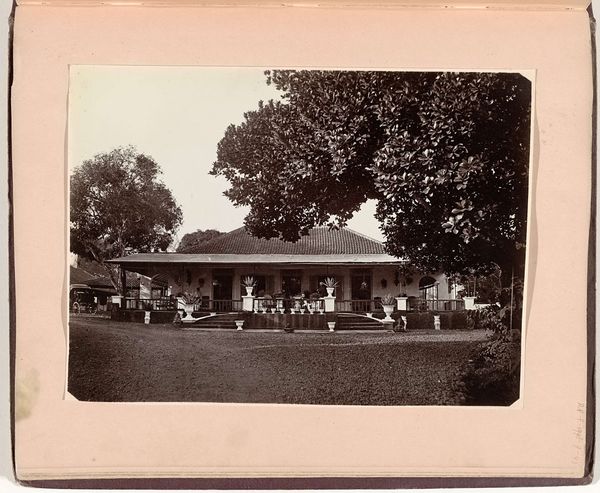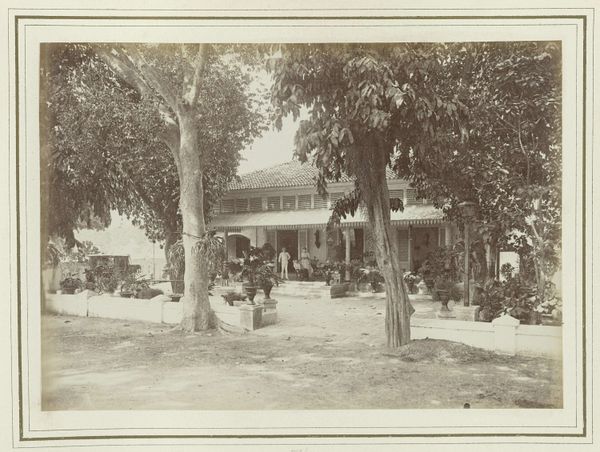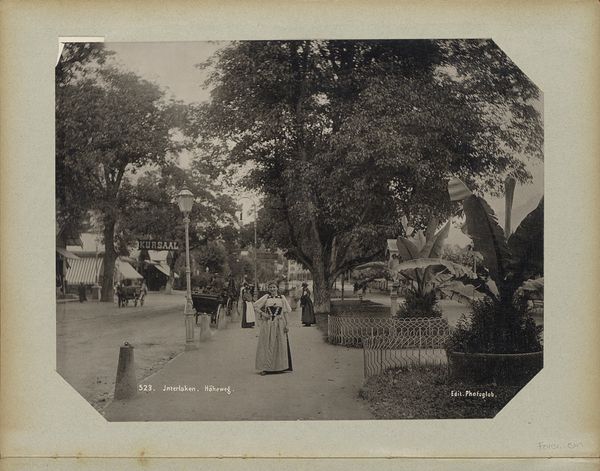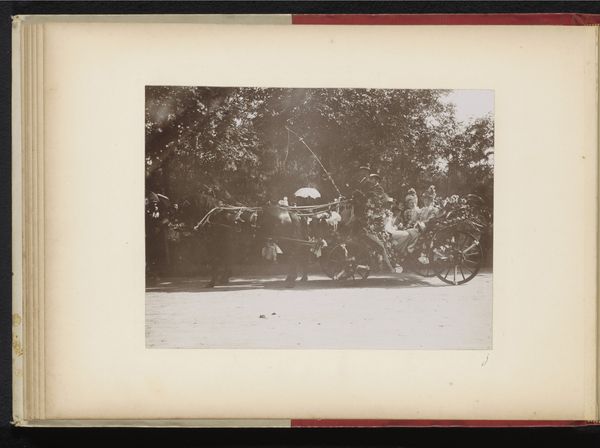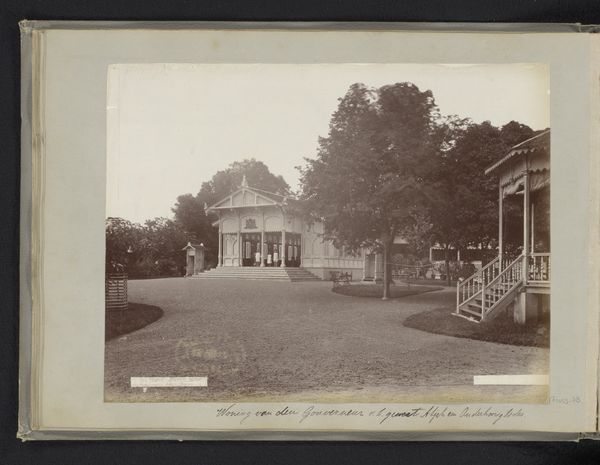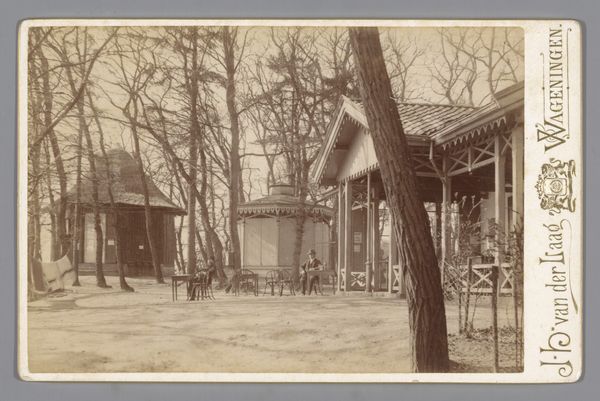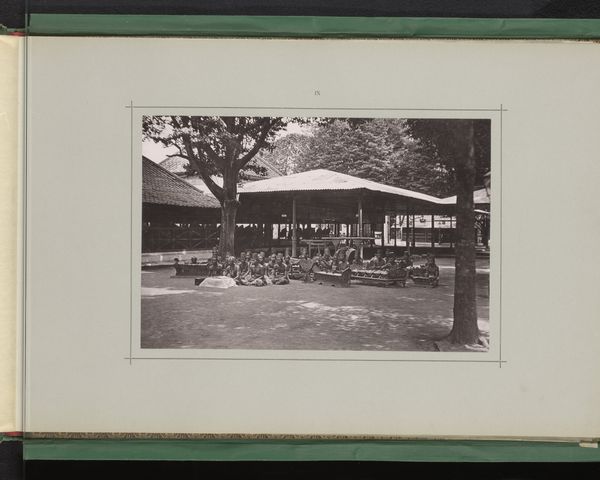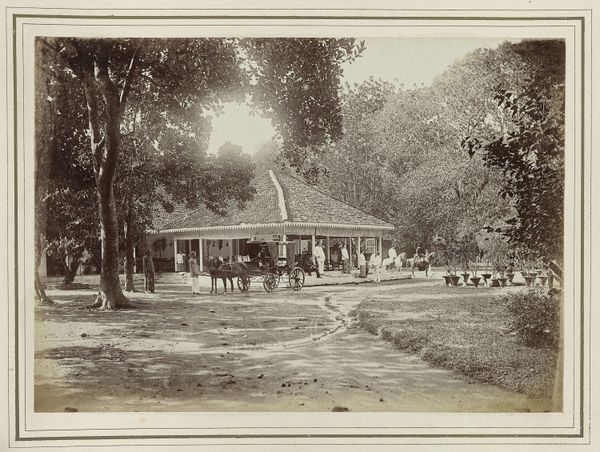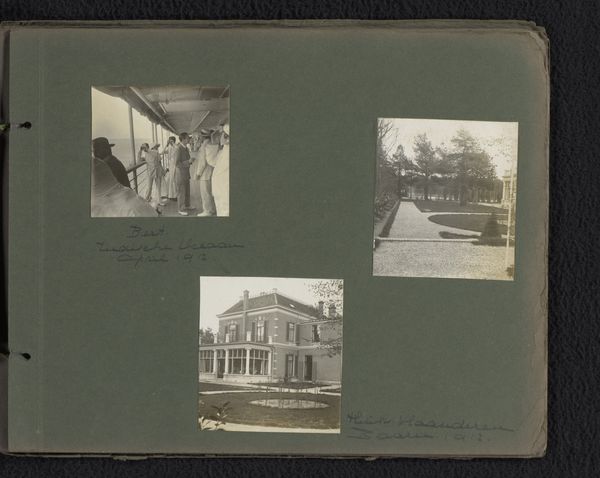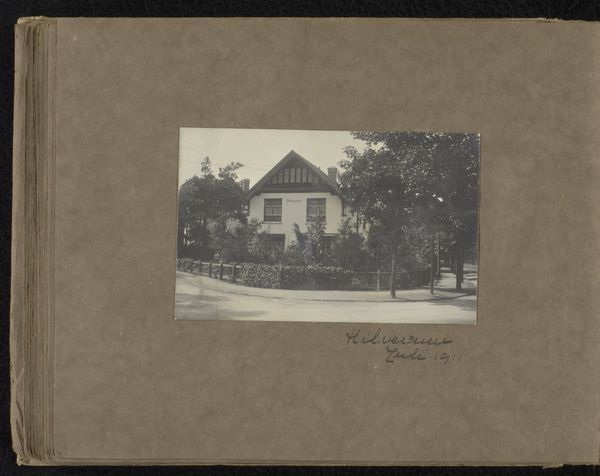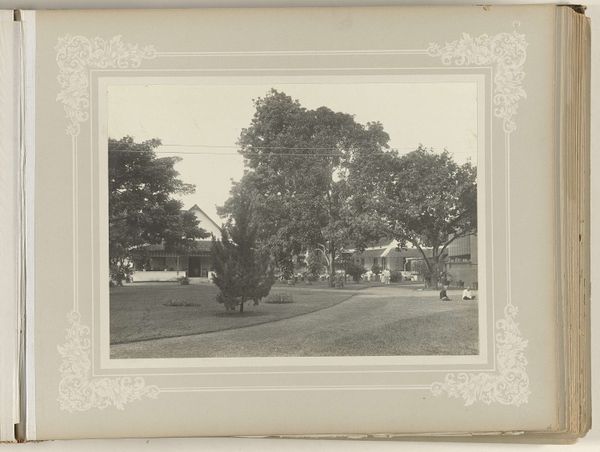
Gezicht op verenigingsgebouw Klambir in Tandjong Poera, Sumatra c. 1890 - 1900
0:00
0:00
gelatin-silver-print, photography, gelatin-silver-print
#
gelatin-silver-print
#
landscape
#
photography
#
gelatin-silver-print
Dimensions: height 242 mm, width 365 mm
Copyright: Rijks Museum: Open Domain
Editor: Here we have "Gezicht op verenigingsgebouw Klambir in Tandjong Poera, Sumatra", taken sometime between 1890 and 1900 by Heinrich Ernst & Co. It's a gelatin silver print depicting a building and several figures. It almost feels like a staged photograph, and I am curious about the choice of material. How does that influence the interpretation? Curator: Considering this is a gelatin-silver print from the late 19th century depicting a building in Sumatra, we need to think about the economic and social context in which it was produced. The presence of European figures suggests a colonial presence and unequal power dynamics. The photographic process itself—the gelatin-silver print—involved a particular type of labor and material extraction. What does the materiality of the image—the silver itself, the paper it’s printed on—tell us about the flow of resources during this period? Editor: So you're saying the silver itself is a kind of record? Like the picture captures one moment, but the material holds the history of extraction. Curator: Exactly. Think about the mining of silver, the industrial processes needed to create the photographic emulsion, the transportation networks required to get the materials and equipment to Sumatra. These elements, often invisible in a traditional art historical analysis, become central when we consider the materiality. Is this image then also an indicator of exploitation of labor, extraction, and wealth accumulation within a global colonial framework? Editor: I see what you mean. I had thought the choice of silver gelatin print may have been for its reproducibility. Curator: That’s definitely part of the appeal for commercial studios like Heinrich Ernst & Co.! But also consider that this reproducibility facilitates distribution and consumption back in Europe, fueling a specific image of the colonies. So, even the seemingly technical choice of material reinforces certain colonial narratives and power dynamics. Editor: That gives me a lot to consider - both about the photograph and about how we study art! Thanks for shedding some light. Curator: Indeed. By investigating its materiality, photography opens a door to discussing labor, commerce and power relations. It changes how we value art.
Comments
No comments
Be the first to comment and join the conversation on the ultimate creative platform.
